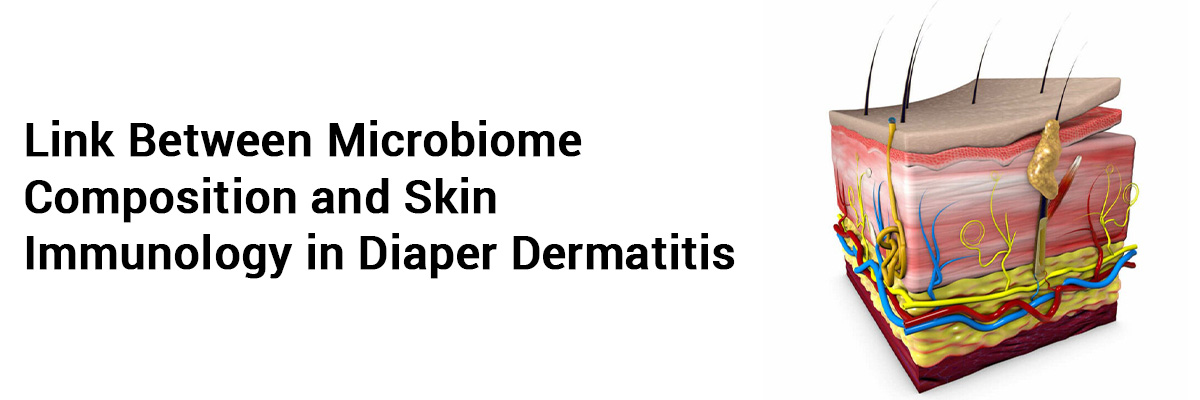
 IJCP Editorial Team
IJCP Editorial Team
Link between Microbiome Composition and Skin Immunology in Diaper Dermatitis
Diaper dermatitis represents a common form of irritant contact dermatitis that is seen in infants and toddlers, primarily due to prolonged contact with urine, feces, or retained soaps and detergents.
A recent review looked at the available literature on the composition of skin microbiome and inflammatory processes that occur in children with diaper dermatitis. It evaluated if inflammation could be reversed by altering the diaper skin microbiome.
Diaper dermatitis is caused by an unfavorable environment under the diaper, where the skin integrity is damaged by fecal enzyme degradation, excessive hydration and a disruption of the lipid bilayer. Such an environment is ideal for the entry of irritants and microorganisms.
The key proinflammatory cytokines involved in the development of diaper dermatitis include interleukin (IL)-1α, IL-8 and tumor necrosis factor (TNF)-α. The release of IL-1α and TNF-α triggers a cascade of pro-inflammatory chemo- and cytokines which causes skin inflammation and erythema.
The composition of skin microbiome has recently been recognized as a factor in diaper dermatitis. The bacteria commonly isolated from the diaper area of neonates aged less than a week include Bifidobacteria, Bacteroides, Enterobacteria, Eubacteria, Lactobacilli, etc. The area affected by diaper dermatitis has been shown to have a dearth of beneficial strains like Staphylococcus epidermidis, Bifidobacterium longum, Clostridium butyricum and Lactobacillus ruminis. Candida albicans and Staphylococcus aureus are the commonly isolated pathogenic strains that are known to cause skin irritation. The altered microbiome results in local inflammation and could worsen the initial dermatitis presentation and may also adversely impact eventual healing.
Probiotics have been reported to modulate the skin microflora and have been found to be beneficial in some skin conditions in adults and children. Probiotics may act as a protective shield against irritants, help maintain low skin pH, secrete beneficial metabolites, and protect against the entry of pathogens. Preliminary evidence suggests that some probiotics, used either orally or topically, could help in cases of diaper dermatitis.
The composition of microbiome appears to play a vital role in the development of diaper dermatitis and probiotics could be a potential therapeutic approach for children suffering from this condition. However, more studies are needed to validate their potential in managing diaper dermatitis.
Source: Petek TH, Petek M, Petek T, Varda NM. Emerging Links between Microbiome Composition and Skin Immunology in Diaper Dermatitis: A Narrative Review. Children 2022; 9(1):112.

IJCP Editorial Team
Comprising seasoned professionals and experts from the medical field, the IJCP editorial team is dedicated to delivering timely and accurate content and thriving to provide attention-grabbing information for the readers. What sets them apart are their diverse expertise, spanning academia, research, and clinical practice, and their dedication to upholding the highest standards of quality and integrity. With a wealth of experience and a commitment to excellence, the IJCP editorial team strives to provide valuable perspectives, the latest trends, and in-depth analyses across various medical domains, all in a way that keeps you interested and engaged.




















Please login to comment on this article